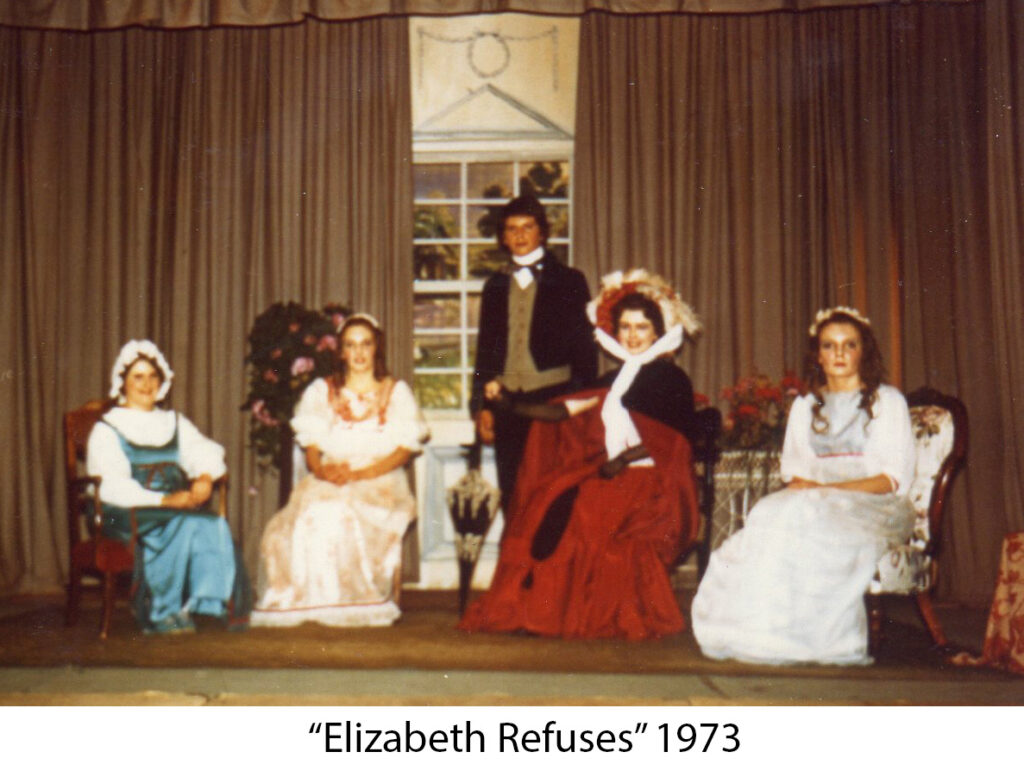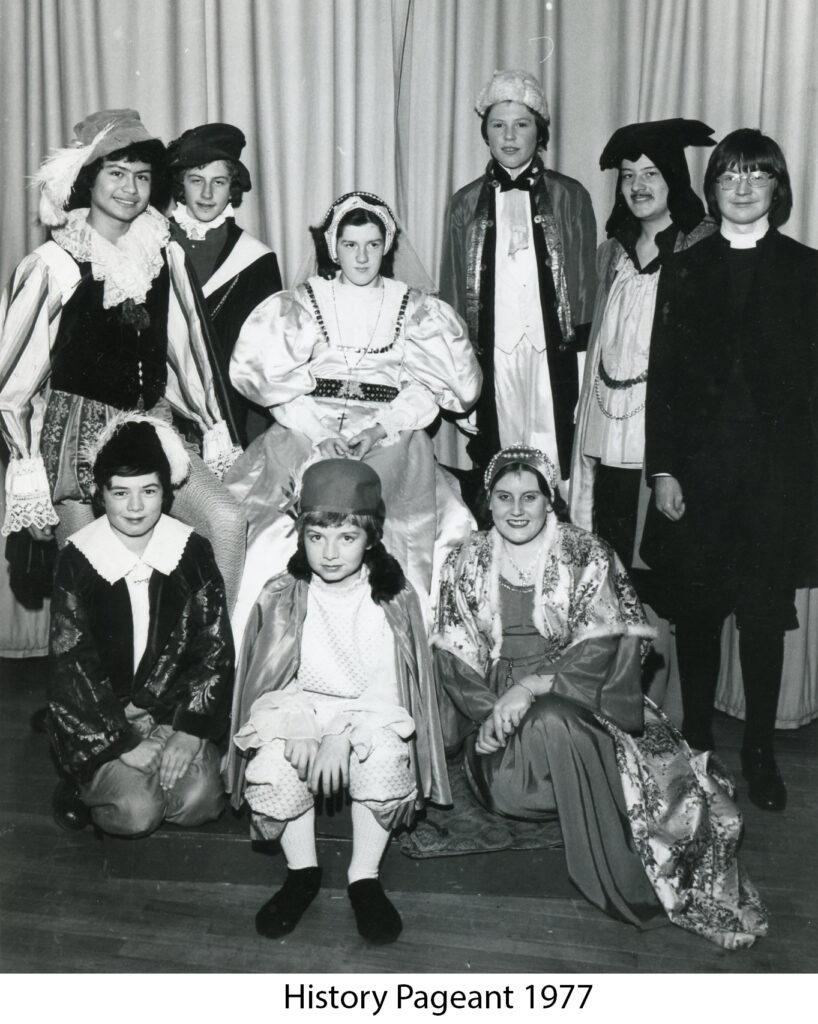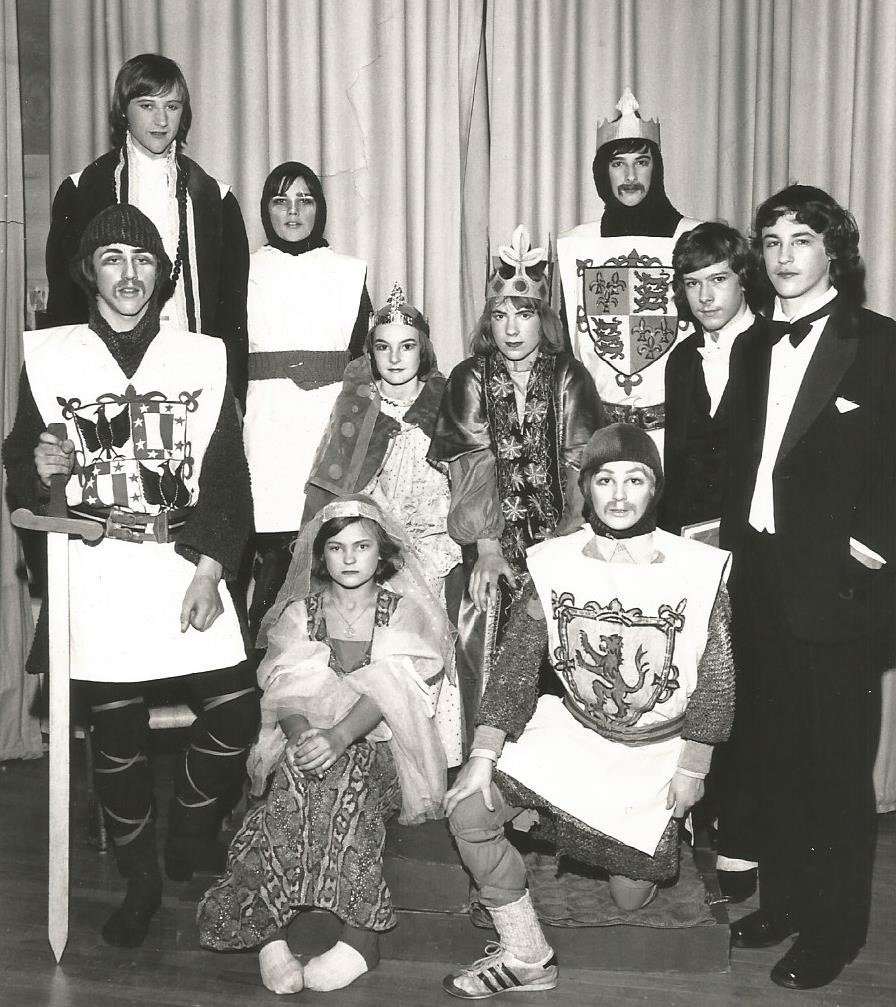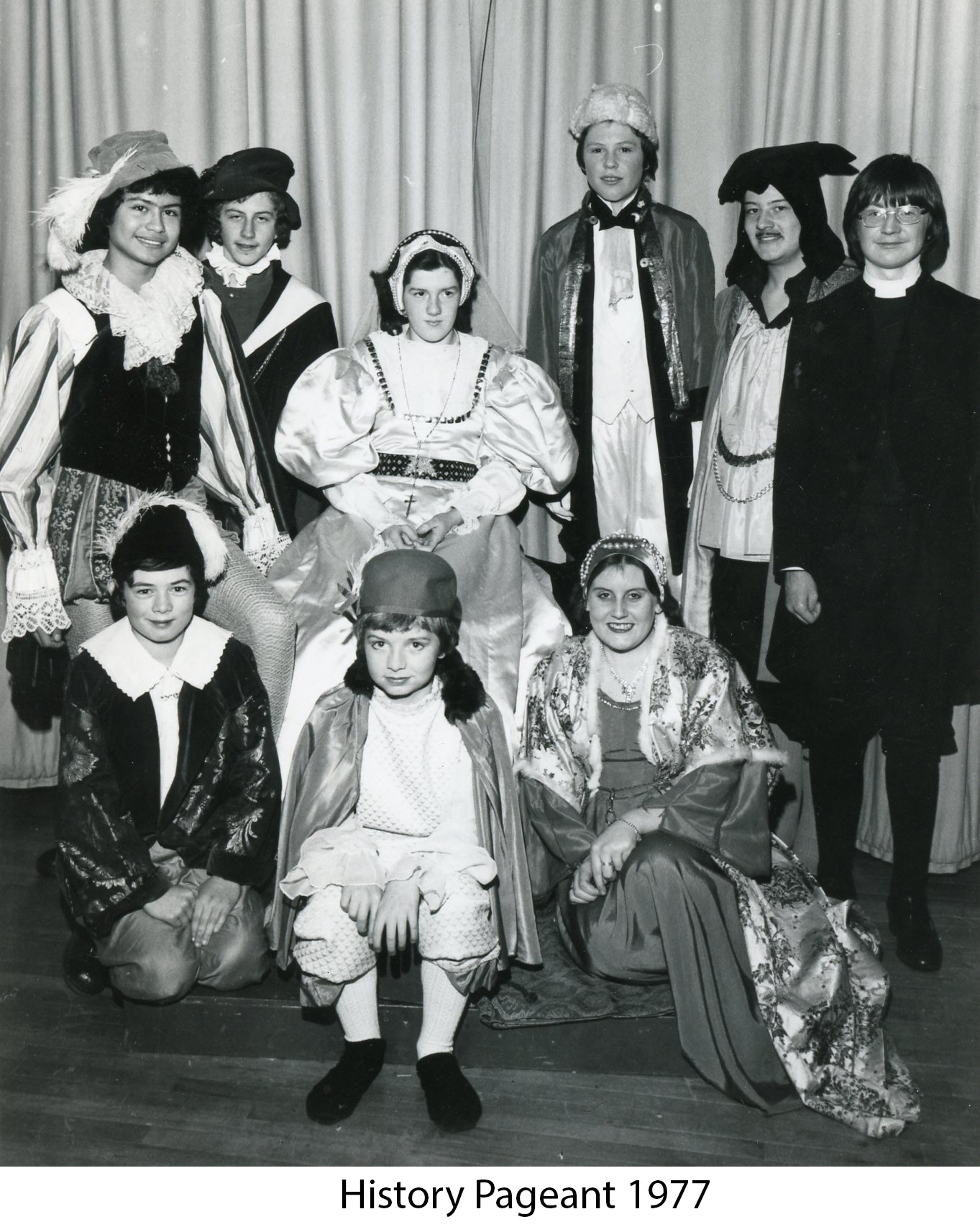I came to Dunbar Grammar School as Principal Teacher of History in October 1966.
During my time at Hawick High School and at Galashiels Academy, both as a pupil and teacher, I had been involved with drama, which I considered to be both enjoyable and important.
Early in 1969 I was off school with back trouble and employed my enforced leisure in reading the History of Dunbar.
I made two discoveries, firstly that we were about to have the sixth centenary of the Royal Charter which created the burgh as a seaport and secondly that everyone who was anybody in Scottish history had some connection with Dunbar. I set to, to produce a draft pageant to record the details and created a narrative interspersed with musical items. On my return to school I presented this idea to the headmaster, John Muir. He was clearly startled by the idea but gave me permission to try to get it off the ground. I knew from my efforts elsewhere that for a school production, a female colleague was essential, and I was delighted when Jean Mckie [formerly Campbell] agreed to join me. Tom Hendry became an invaluable stage manager.
The venture was warmly supported by many members of staff and received with enthusiasm by a wide range of pupils. I was afflicted with further back trouble in May and Jean had to mount the show without me. She was ably assisted by Miss M Intin and Mrs L Glass. I did manage to be in the audience.
Eight narrators told the story from prehistoric hunters in the salt marshes through the ages from the coming of the Romans to the area, through the Dark Ages, the burning of Dunbar, the coming of Cospatrick in the reign of Malcolm III, life in the castle, the wars of independence, the siege of Edward 1 in 1296, the escape of Edward II after Bannockburn, the defence of the castle by Black Agnes, the founding of the collegiate church in 1342, the creation of the Burgh in 1370, the granting of the Lordship to Margaret Tudor in 1503, the Hertford attack, the court of Mary Queen of Scots, the fishing disaster of 1577, the Cromwell occupation, Robert Burns’ visit in 1787 and the visit of Queen Victoria in 1878. The show played to capacity audiences and was well received. It involved approx. 200 pupils in one way or another.
The text, in the manner of the time, was in standard English. A second version with more Scots language was produced for the Queen’s Silver Jubilee in December 1977. It was equally successful.
Dunbar was used to drama productions in the Corn Exchange. Plays had been produced there with an adult group by Jack Milne. It was however in need of an upgrade and the Grammar School had a good stage, better facilities and a parking area. East Lothian council decided to mount events there. This proved disappointing. Audiences failed to materialize. A concert by the Kevock choir had more people on the stage than in the audience. Other highly regarded shows had meagre audiences.
For Civic week in 1972 it was decided to put on a Scots Night including a show by the White Heather Club together with a contribution from the school. This Idea was met with surprise by the club, but they conceded that it was a successful event, and it did provide an audience. A similar arrangement was tried with Jimmy Shand and was also successful. The main school contribution to the White Heather event was an operetta “Song of the sea” written by Mai Intin and produced by Jean and myself. Rennie Weatherhead provided some important fishing artefacts.
In that year I wrote and produced a piece called ‘A Hundred Years Syne’ to commemorate the education act of 1872 which established education for all Scottish children.
This was followed by a drama evening in Civic Week 1973 when Jean Mckie produced Campbell of Kilmohr by J A Ferguson. This was followed by seven songs rendered by the choir, led by Mai Intin. Jack Milne produced ‘Eight Very Short Sketches’ and I produced ‘Elizabeth Refuses’ by Margaret Macnamara based on Pride and prejudice by Jane Austin. This was followed soon after by a production of part of G B Shaw’s Arms and the Man.
In 1981, an exhibition ‘Its Changed Days Right Enough‘ was mounted in six East Lothian Towns by Stella Elsdale and Pat Fitzgerald who had been established at Brunton Hall as ELCHAT. The exhibition was in the Parish Church Hall; My wife helped with it and contributed some embroidery. To complement this exhibition I wrote a text for a fashion show ‘A Century of Fashion‘ set in the social context of the time and Jean and I mounted a show using mainly authentic costume which I borrowed from various people but mainly from Anne Macdonald Scott. The school hall was transformed into a charming café chantant.
Donald McAllister had also written a very successful rock musical “The Day of Judgement” which we helped to stage. This concluded my contribution and that of Jean Mckie to drama in the school. Gordon Roberts arrived about that time and continued the tradition.




See From, Slate to disk 1997, Lena Glass

You must be logged in to post a comment.